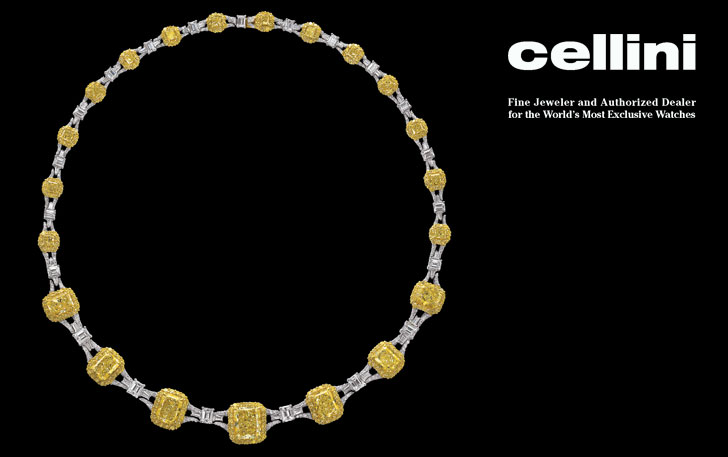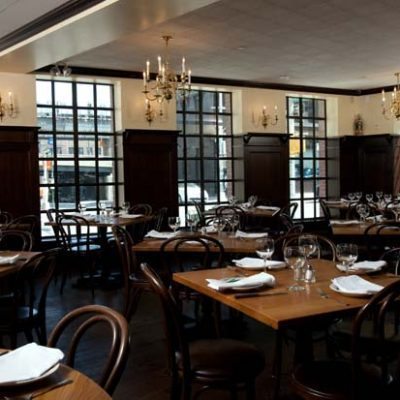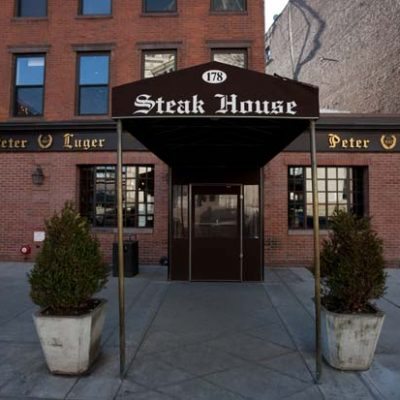A glorious anomaly in ever-gentrifying, almost tragically-hip Williamsburg, Peter Luger’s aversion to adaptation is its most cherished ingredient
by Meredith Napolitano Stettner
Blame it on familial stubbornness. Maintaining a culinary institution requires a certain discipline—an aversion to adapt, a willingness to exist in a world where even the slightest change is carefully, painstakingly considered, all the while being part of a restaurant community where something new is trending weekly.
It helps to get even better with age. That’s just what keeps the customers coming back to perhaps the city’s most iconic steakhouse.
At the bottom of the Williamsburg Bridge, of course, is Peter Luger, an anomaly in the ever-gentrifying, hip neighborhood where restaurants and residents come and go. But here, regulars don’t need a menu, the 19th-century Tudor interior is here to stay, the checks are handwritten, and so are the ledgers and daily reservations charts.
And the possibility of the rent increasing? Null. Sol Forman, who frequented the dwindling Carl Luger Café and Billiards (established 1887) across the street from his factory at 185 Broadway, bought the building in 1950 at an auction for $35,000 and it has remained in the Forman family since.
Despite or perhaps due to this rootedness, Luger’s boasts an eclectic clientele. Regulars range from families to Wall Streeters, tourists to hispters, and most importantly, purists who want a steakhouse experience that reigns over its Midtown clones.
“There is really something for everyone here,” said Dan Turtel, 24, a fourth generation owner and great grandson of Sol Forman. He and his cousin, David Berson, oversee operations, along with their third-generation aunt, Jody Storch, grandmother Marilyn Spiera, and great aunt Amy Rubenstein (Sol Forman’s daughters).
“It’s always surprising. This Valentine’s Day, we turned four-tops into two-tops and saw a younger crowd,” recalled Turtel. “Other days there’s lot of old-school types.” Even the financial crash of ’08 didn’t see much slowness. “People wanted comfort food.”
Turtel, who studied mathematics at Duke, was getting ready to enter the tech world, but now finds himself in an office reliant on handwriting.
“We have some computers, but not many. It’s pretty primitive,” he laughed. The restaurant only began accepting debit cards three years ago and still doesn’t take credit cards.
It’s a management group that prides itself on being steadfastly hands-on, especially when it comes to meat sourcing. (“My favorite part,” Turtel said.)
Selecting the USDA Prime Beef, the top 2% of all cattle, is a skill passed down by Marsha Forman, Sol’s wife, who hired a retired USDA inspector to train her. Out of 100 hindquarters they’ll see in a visit, they may get 30 to fifty. On a low day, twenty. Size and fat content are key, and the best taste stems from young (but not too-young) white bones.
“Sol believed in doing something and being good at it, and that is what we maintain,” explained Turtel. That means no accoutrements. You won’t find garnishes. If you want greens, you’ll order the famous creamed spinach, served in a generous portion, like all the sides.
Among the rare menu changes at Luger’s was adding a fish dish (besides the essential shrimp cocktail) and a burger, the latter only available at lunch. But not much else. The Porterhouse remains the star. Some people, though, come for the signature, thick-cut bacon, which landed on the menu via customer envy (people saw the staff eating it; now it’s a staple).
You can find some of Luger’s signatures in specialty markets now, too. And this enterprise, again, was due to demand. Customers began bringing jars to take home steak sauce, so management began selling it, as well as the cocktail sauce and the creamed spinach.
Most prized for customers is the carefully selected meat. Over the past five years, the aforementioned Luger ladies have been running a butcher shop through the restaurant’s website, featuring five package options and overnight shipping. While occasionally on the pricey side, they are popular gifts, with a bottle of sauce always tucked in. (“We want to offer things we have no doubts about,” Turtel said.)
That consideration was also important as the request to sell bacon became a market addition. A year and a half of testing went into production and packaging to make as little sacrifice possible before launching it in October 2015. Ultimately, Turtel said, “It had to be a bit less thick than the kind served here. Maybe we’re control freaks.”
That quality doesn’t seem to bother anyone. The restaurant has turned down franchises in Florida and Vegas, intending to stay true to its Brooklyn roots for the foreseeable future. (A Great Neck location, founded in 1960, remains the only other outpost.)
On the day I speak to Turtel, a tall waiter, visibly younger than his colleagues (one a 50-year veteran) walks by with a bread basket.
“His father worked here,” he said offhandedly.
The business has a passion for such family ties. It’s difficult to leave once you’re in. And like many families, they realize some secrets are perhaps better kept: they won’t, for example, reveal how long they dry-age meat. Top steakhouses have reported dry-aging from 21 days to 140 days.
Does Luger let it sit comparably or longer?
“I’d have to kill you if I told you,” Turtel said with a grin.
Peter Luger Steak House
178 Broadway, Brooklyn / 718.387.7400 / peterluger.com













